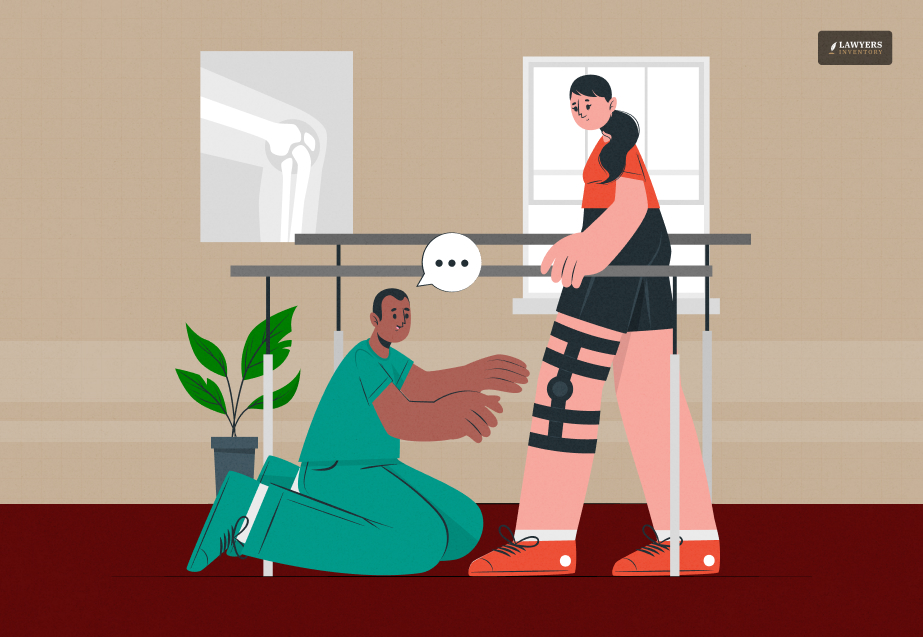
How long do personal injury cases take to settle? Does it take 2 days? 2 weeks? Or 2 years?
Personal injury cases in Toledo, Ohio, the complexity of the case of individual injury, the severity of injuries and the attitude of the interaction of the parties, can vary.
Additionally, these greatly matter in the context of PI cases when you are trying to determkne the duration. Typically, settlement of personal injury case can take a few months up to several months depending on several factors.
Motor vehicle accidents are a significant concern in Toledo and Lucas County. In 2023, 4,579 vehicle accidents were reported, 12 resulting in fatalities and 80 involving serious injuries.
This number underlines the need to be aware of the legal procedures going into cases of personal injuries.
Due to the complexities and potential duration of personal injury cases, hiring a Toledo personal injury lawyer for your legal needs is advisable.
An experienced lawyer can give customized advice, help navigate the legal process, and try to recover proper damage to your injuries.
Hi. In today’s blog, I will be talking about how long do personal injury cases take to settle. Additionally, I will also talk about what are some of the things that you need to do after an accident in a personal injury case.
So, keep reading this blog till the end, and thank me later…
Personal Injury Case: Steps Involved In All Cases
So, what happens after an accident? What are some of the things that you can do to hold others responsible for your damage?
If these are some of the things that you want to know, then you have reached the right place:
The Initial Steps and the Investigation
The process starts with a meeting with lawyers. In this step, lawyers collect information about your case, such as medical documents, statements from witnesses, etc.
It is a vital process that helps evaluate the strength of the case. Depending on the complexity and evidence in the case, investigations at this stage can take weeks to months.
Medical Procedure and Rehabilitation
One reason for extended timelines is the length of time it takes to get medical care and recover from treatment.
Injuries cannot be fully identified and addressed until a full recovery is made, and compensation is contingent on the full extent of those injuries.
The process as a whole will be delayed as extensive medical treatments or diagnostic workups are needed for patients.
Most insurance adjusters and legal teams wait for the medical condition to stabilize before taking the next step.
Negotiating Settlements
The next step after the medical treatment ends is negotiating for a resolution. The length of this stage can differ significantly.
Compensation can be agreed upon quickly, and the case is settled. However, resolving these disputes can take time if there is a disagreement regarding liability and/or amount.
The time to reach a reasonable settlement may take several months after the initial demand from a particular party is received; it may take several rounds of negotiation through attorneys and insurance representatives to ascertain a fair amount.
Potential for Mediation
Mediation can be a great option if negotiations yield no results. In mediation, a neutral third party acts as a referee and facilitates conversation between both parties.
Court proceedings can take months or even years to complete, but mediation usually resolves issues in a couple of sessions.
Since each party needs to agree to find some middle ground, the time mediation takes will vary based on how parties approach the mediation process.
Court Proceedings and Litigation
When mediation is unsuccessful, litigation is required. This process takes a considerable amount of time.
Court preparation includes collecting additional evidence, filing more paperwork, and setting a trial date. Heavy court schedules can lead to adjournments and, thereby, delays.
Depending on the complexity of the case and the court’s schedule, trials can last anywhere from a couple of days to weeks.
Post-Trial Considerations
After a trial is final, time may still be needed for post-trial motions or an appeal. Both parties may appeal the judgment, putting the matter back in litigation.
That’s not all; appeals create ambiguity in the timeline as appellate courts set their schedules and agendas. Resolution at this stage can take a few months or, in some instances, several years.
Factors Influencing Duration: How Long Do Personal Injury Cases Take to Settle?

Now that you know about what are some of the things that are involved in the process of personal injury cases, let me tell you the factors on which time depends.
Yes. So, if you were thinking about “how long do personal injury cases take to settle,” let me tell you something. There are several factors on which it depends.
These include the complexity of a case, the witnesses, and the pieces of evidence available. Apart from that, it also depends on who is responsible for the damage and what percentage of damage should be claimed.
On an average, the time it takes to settle a personal injury case to settle takes about 5 to 7 months. However, we have all seen cases that have taken longer than that, with some extending over two years!
Here are some of the factors on which the complexity of a case depends:
Case Complexity
The more complicated a case is, the longer it takes to settle. Some factors that can make a case more complex include:
- The number of people involved in the accident
- The amount of evidence needed to prove who was at fault and how much damage was caused
- Disagreements between the parties involved
For example, if multiple people or businesses are responsible for the accident, the case may take longer to resolve than a simple case with just two parties. If new evidence appears or if the parties cannot agree on key facts, this can also cause delays.
Compensation Amount
The larger the money at stake, the longer a case can take. Compensation claims on either end require thorough investigation and analysis as to the impact that a claim can have on compensation amounts.
If the injuries are serious and need long-term treatment, it can then take a long time to work out the appropriate compensation.
The higher the stakes, the more a defendant is going to want to negotiate, and that can slow things down. On the flip side, smaller claims often resolve more quickly because not much is at stake.
Severity of Injuries
Injuries can be as mild as a cut or be as life altering as a disability. And the more serious the injury, the longer the case could take.
Severe injuries often need long-term medical care and might not reveal their full effect right away.
Lawyers and insurance companies will wait and see what happens in the long term before signing off on a settlement. It can also lead to delays if multiple people or companies are responsible for the injury.
Willingness to Settle
The speed of the case also depends on how willing the defendant is to settle.
If the defendant refuses to negotiate, the case may go to court, which can take years. However, if both sides are open to compromise, they may reach an agreement faster through negotiation or mediation instead of going to trial.
Role of Legal Representation
Capable legal representation can significantly impact the time it takes to resolve a personal injury case.
Experienced lawyers navigate tricky court procedures much more deftly and ensure no time is wasted. They also offer clients guidance on whether to accept a settlement or take their case to trial.
The best legal advice is to get to the finish line as soon as possible, and your chance of success, however promising, won’t help if you take too long to arrive.
Take It Slow But Steady!
How long it takes to resolve a personal injury case is very case-specific. Therefore, there is no single answer to the question of how long it is normal for a personal injury case to settle.
Every phase, from preliminary investigations to the prospect of a trial, presents unique challenges and timelines.
However, there are some cases where people settle or go for mediation. Some others demand litigation, which may last long.
These dynamics offer potential insights that can help individuals and families understand how to manage expectations and navigate the decision-making process.











0 Reply
No comments yet.